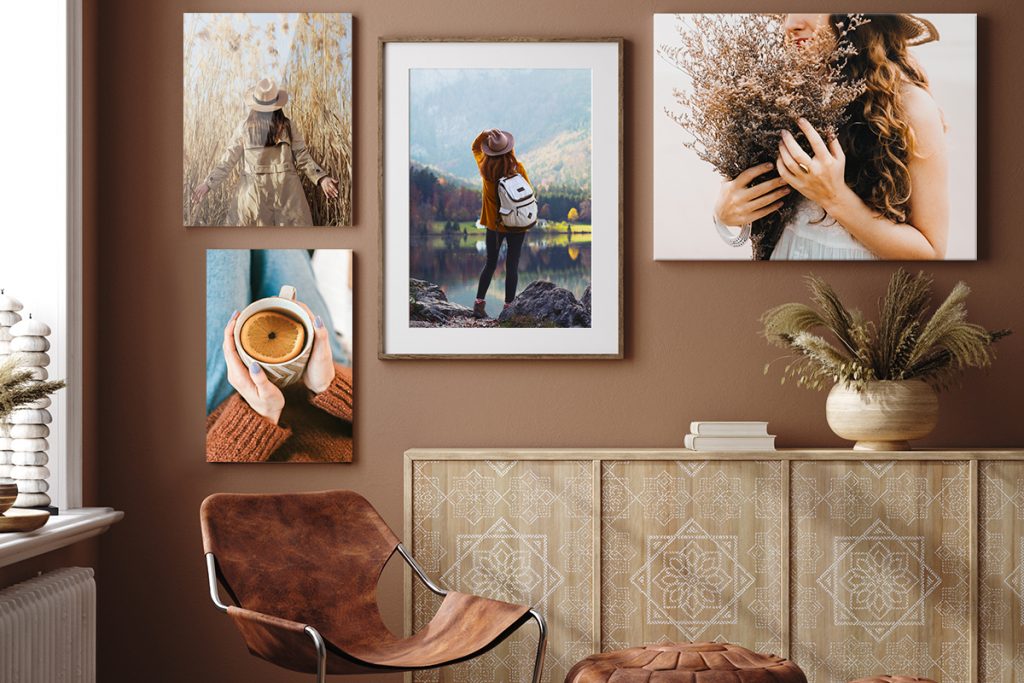The advent of the mass customization model – where mass production remains largely automated but allows for elements of personalization – has changed many industries, with print no exception. This model is gaining market share in B2C online stores as well as in the print-on-demand sector.

This is the print industry’s response to changing customer priorities, as buyers (particularly Millennials and Generation Z) increasingly value the potential for individual self-expression in their purchasing decisions.
Although mass customization is now gaining market share in the garment sector with the rise of custom tees and hoodies, it was largely pioneered in the printed decor industry.
In this article we look at one global player in the wall art sector who employ the model. As discussed below, price performance has been key here: mass-customized articles tend to be sold at prices only marginally higher than those for the equivalent generic items. These are developments which no print provider in the garment sector can afford to ignore.
Picanova: a Pioneer of the Approach
Picanova is a custom printing firm headquartered in Cologne, Germany, which operates online stores across several continents. Their Canadian outlet, BESTCANVAS.ca, gives a representative idea of the firm’s offer: individually printed home textiles (towels, cushions, blankets) and quirky gift ideas (personalized mugs and jigsaw puzzles), as well as a wide range of custom wall decoration.

The signature line and bestseller of the Picanova wall decor range is canvas prints: photo-printed sheets of canvas fabric that are wrapped, in the traditional style, over an internal wood frame. Canvas was the product with which Picanova pioneered their mass-customization approach, and the company now has the capacity to produce up to 500,000 prints – each one unique – in a single day.
The Journey of a Mass-Customized Canvas Print
The ordering and production process of a print made according to the mass-customization model is automated to the greatest extent feasible. The “journey” of a canvas print ordered online at BESTCANVAS.ca illustrates how this works:
Once a customer arrives at the canvas prints landing page, they can begin the purchase process with a single click – and they’re then immediately prompted to upload a digital image from their device’s storage.
The uploaded file is then analyzed by the site’s software. The pixel count is measured to ensure that the image has a high enough resolution to be reproduced in the quality required: images measuring less than 310 x 310 px will be rejected.
The customer then chooses the specifications for his or her print: the size, the exact area of image detail printed, and certain physical product specs such as framing options. The process is interactive, with the buyer seeing a mock-up of the final print which updates as the changes are made.
Once the order is completed, a unique print file is generated and transmitted electronically to the inkjet printers at the relevant production site. The production process at this stage remains fully automated: the print detail for each item is of course determined by the custom data, but the procedure is otherwise identical for all prints on the substrate in question. The specialist workforce can therefore concentrate their efforts on maintenance and troubleshooting.
This approach not only keeps production costs to a minimum, it also allows turnaround times that would have been unthinkable not long ago: a canvas print ordered at BESTCANVAS.ca is ready for dispatch just 24 hours after payment is processed.
Expectations of the Mass Customization Market
The main appeal of mass customization, of course, is that it caters to a sector of the market who wouldn’t previously have been able to afford unique items. Exactly how much prices of fallen can be a genuine surprise to those who haven’t been following the industry closely.
To give an example, the entry price for a canvas print at BESTCANVAS.ca is just C$7.30 (for an 8” x 8” print). True, the store in question is the price leader for Canada, but the point is made – these pricing levels mean the prints are competing with regular mass-produced wall decor features rather than traditional bespoke items.
But the expectations of high quality (both in print performance and materials) associated with the traditional custom sector haven’t been relaxed as much as one might think. A significant proportion of mass-customized prints are bought as prestigious gifts for loved ones – often commemorating life milestones. That means providers who can’t offer both printing excellence and intrinsic product quality will likely be punished in the long run.
Takeaway
The ever-smaller difference in production cost between generic and mass-customized items has had a predictable effect across the retail sector: buyers increasingly expect at least a degree of customization to come as standard. Print is no exception here: experts believe that before long, print providers who can’t adapt to these new market expectations will inevitably start to lose ground against their competitors.










